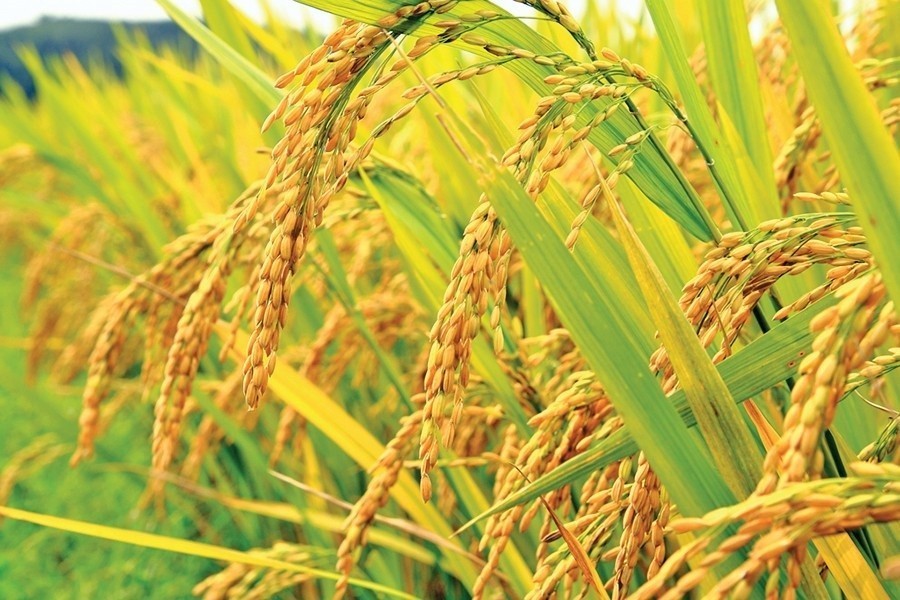Bangladesh has experienced heatwaves and the lowest rainfall in four decades during the monsoon this year - a change in the weather condition that has affected paddy cultivation.
As sizzling heat has continued in autumn to bake the citizens with power cuts worsening the situation amid the heat, the abnormal weather patterns have delayed the Aman season of paddy cultivation.
The Department of Agricultural Extension is hoping to meet the plantation target in a couple of weeks by using irrigation, reports bdnews24.com.
Meteorologist Abdul Mannan said the rainfall in July was 57.6 per cent lower than usual and the lowest in 42 years since the July of 1980.
The rainfall recorded last month until Aug 30 was 39.6 per cent less than normal, which is likely to be the third lowest in the last four decades. The lack of rainfall registered in August 1989 was 53 percent below the expected level.
“Such long spells of no rain are very rare. It is damaging agriculture and all the sectors involving biodiversity,” Mannan said.
The last two months saw several spells of heatwaves, which puts the possibility of expected rains in September at risk.
Mannan blamed climate change for the drop in rainfall and rise in temperature. "The places that had little rainfall saw more, while regions with usually more rains witnessed little downpour.”
“The lack of rain was accompanied by heatwaves. It was the same in other parts of the world. The change in weather settings is causing such abnormal patterns.”
The average temperature across July was 2.6 degrees Celcius higher than normal and it was 2 degrees Celsius more in August.
“Although the average highest recorded temperature did not have that big of an impact, the warmer feeling is causing an uncomfortable situation everywhere.”
UNRELENTING HEATWAVE
Heatwaves are sweeping across the country in early autumn. The highest temperature in the country on Thursday was recorded at 36 degrees Celsius in Satkhira and Jashore. Meteorologist Bazlur Rashid said a mild heatwave was sweeping over Jashore and Kushtia districts.
The forecast for the next 24 hours states that light to moderate rain or thundershowers with occasional gusty winds might occur in most places in Rangpur Division, many places in Rajshahi, Mymensingh and Sylhet, and a few places in Dhaka, Khulna, Barishal and Chattogram.
The northern region might experience medium to heavy rainfalls.
AMAN AFFECTED
Among the two types of Aman season paddy, the seeds of transplanted ones are sown in the first month of monsoon. The seedlings are then planted in the fields in the second month of monsoon, and early autumn. Depending on the region, the paddy is harvested in late autumn or early winter.
The harvest target for this season was set at 5.622 million hectares of land.
Habibur Rahman Chowdhury, a director of the Department of Agricultural Extension, said 84 percent of the target has been achieved. The rest will be planted within 12 to 15 days.
“It might have rained less but we’re irrigating the lands. This [less rain] would be a problem if water levels drop. Let’s hope it rains normally in September.”
Majharul Aziz, the deputy director of the field service wing (coordination), said the water level this year was too low to soak jute.
“But rains have been forecast in September. A little bit of delay won’t be too damaging. If it doesn’t rain sufficiently, we can complement it through irrigation. The government has made all preparations. We are hoping to meet the target.”
“Lower than usual rainfall is very alarming. We have to be prepared for the future. Even if we don’t sustain big losses this year, the fear of adverse effects will intensify if such weathers continue next year.”
ADVICE FOR FARMERS
The Department of Agriculture Extension has advised the farmers to sow the seeds swiftly and leave out damaged seeds to tackle the heat waves.
In the case of yellow caterpillar infestation, each hectare of harvest land has to be sprayed with 10kg of carbofuran insecticide.
Seeds must not be planted too deep into the soil. Harvest lands have to be kept free from weeds. Approved herbicides have to be applied one-three days after planting seeds.
Nitrogen fertilisers have to be applied 15-20 days after planting seeds.


